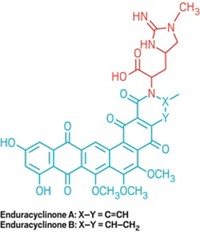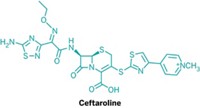Advertisement
Grab your lab coat. Let's get started
Welcome!
Welcome!
Create an account below to get 6 C&EN articles per month, receive newsletters and more - all free.
It seems this is your first time logging in online. Please enter the following information to continue.
As an ACS member you automatically get access to this site. All we need is few more details to create your reading experience.
Not you? Sign in with a different account.
Not you? Sign in with a different account.
ERROR 1
ERROR 1
ERROR 2
ERROR 2
ERROR 2
ERROR 2
ERROR 2
Password and Confirm password must match.
If you have an ACS member number, please enter it here so we can link this account to your membership. (optional)
ERROR 2
ACS values your privacy. By submitting your information, you are gaining access to C&EN and subscribing to our weekly newsletter. We use the information you provide to make your reading experience better, and we will never sell your data to third party members.
Biological Chemistry
Giving Bacteria A One-Two Punch
Drug combo stymies development of resistant bacteria
by Celia Henry Arnaud
April 9, 2007
| A version of this story appeared in
Volume 85, Issue 15
Using the right combination of antibiotics could curtail the development of drug-resistant bacteria, a new study shows.
Systems biology assistant professor Roy Kishony and grad students Remy Chait and Allison Craney at Harvard Medical School demonstrate that certain combinations of doxycycline and ciprofloxacin favor the growth of doxycycline-sensitive bacteria over doxycycline-resistant ones (Nature 2007, 446, 668). The combination is "suppressive," meaning that its bacteria-killing effect is weaker than that of the individual drugs.
The researchers tested the combinations against Escherichia coli strains that differ only in the presence or absence of a tetracycline efflux pump, which provides a common mechanism of resistance to tetracycline, doxycycline, and related antibiotics. In assays that measured selection for the gene responsible for this resistance, they found strong selection for doxycycline-resistant strains when they treated bacteria with doxycycline alone or in combination with erythromycin, which has a synergistic effect with doxycycline.
In contrast, the doxycycline-ciprofloxacin combination selects against the doxycycline-resistant bacteria at some concentrations. The resulting persistence of doxycycline-sensitive strains is counterintuitive. "The selection against resistance stems from the interaction between the antibiotics and is therefore largely independent of the underlying mechanistic way by which the bacteria become resistant," Chait says.
The observed effects work against only doxycycline-resistant bacteria. The authors suggest that such a strategy will work best with combinations of drugs where each one suppresses the other.
The clinical relevance of the findings is still uncertain. The current work involves antibiotic doses below therapeutic levels. "The suppressive condition that allowed for the observation of the effect is never used clinically," says Shahriar Mobashery, an antibiotic expert at the University of Notre Dame. Nevertheless, the study is "interesting conceptually," he says, and the phenomena "deserve further study and explanation."
Kishony's group plans to study higher drug concentrations that fully inhibit both the sensitive and resistant bacteria. "We hope that these findings may suggest avenues of research into new treatment strategies employing antimicrobial combinations with improved selection against resistance," Chait says.





Join the conversation
Contact the reporter
Submit a Letter to the Editor for publication
Engage with us on Twitter